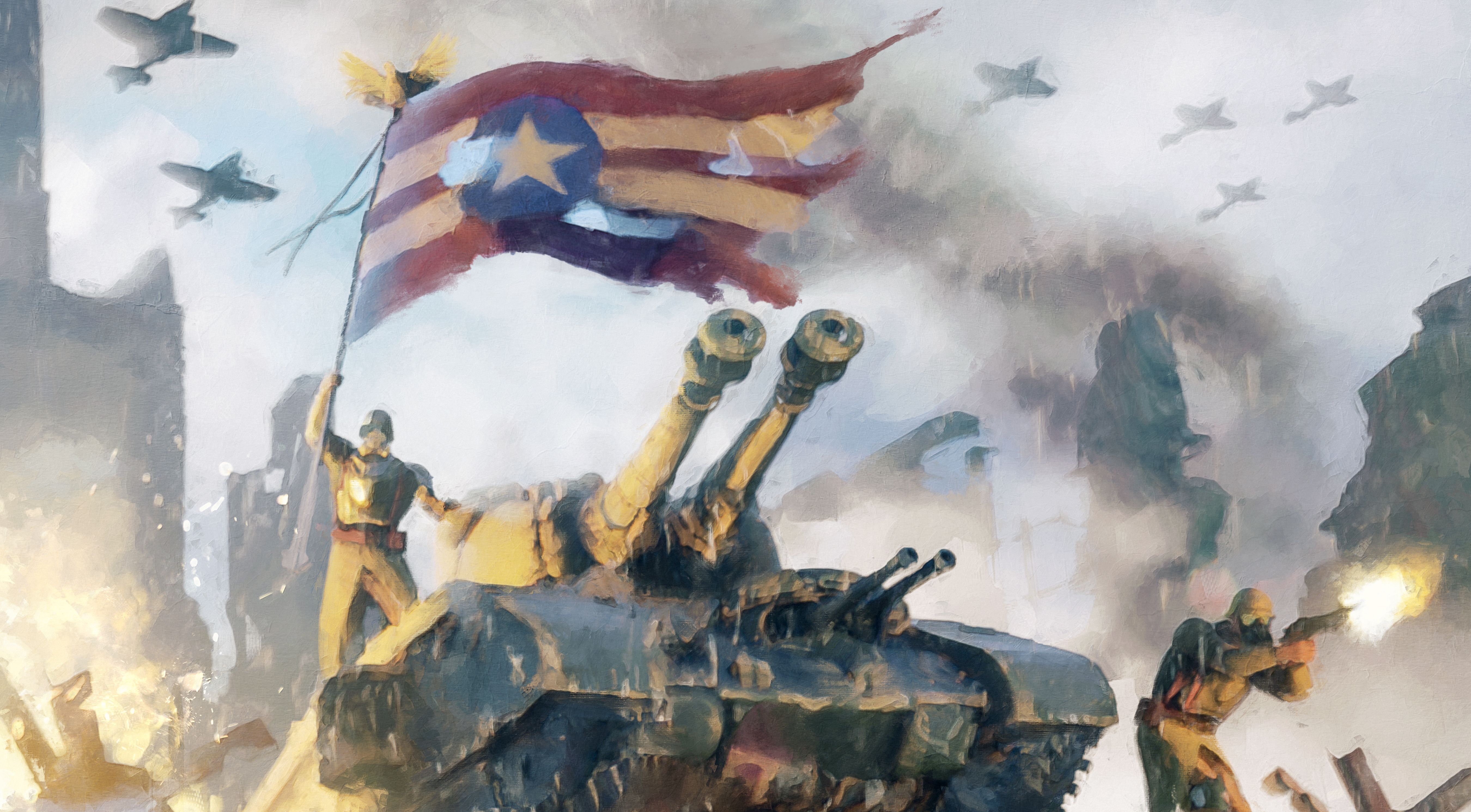Cavorine Gas
The discovery of cavorite and the Balfour Engine is largely considered a technological miracle. These discoveries fundamentally changed the way humanity approaches the fabrication of new objects. The soaring fluted skyscrapers of Chicago and the thousands of refinery stations on Concord Major both stay aloft due to the special anti-gravity properties of this metal. In the late 1800s, with the miniaturization of Balfour Circuits, more and more cavorite began to be incorporated into everyday life. However, despite the obvious and irreplaceable benefits offered, the potential for tragedy lies dormant within every wire.
Effects
When subjected to high heat, cavorite sublimates into a thick gaseous form referred to as “Cavorine” Gas. The gas is, in form, an opaque swirling fog glittering green-gold. Due to the antigravity properties of cavorite, the gas hangs in place, only moved by the wind. It can linger without dissipating for months at a time, holding itself aloft through the static electricity in the air. Upon contact with mucous membranes such as the mouth, sinuses, or lungs, the gas proves incredibly toxic. After absorption, the initial cells experience rapid decay. Elements of the gas that reach the bloodstream strip oxygen out of the system. This results in hypoxemia and eventually total respiratory failure. Exposure to Cavorine Gas without protection can lead to unconsciousness within three minutes and brain death within ten minutes. Survivors of non-fatal amounts suffer from intense scarring within their lungs and are often permanently disabled.
Perhaps mercifully, survivors report that the overall experience is relatively painless. It was described as beginning with some tightness within the chest, and then intense drowsiness. Due to this, Cavorine Gas has gained a reputation as a silent, peaceful killer. A series of posters produced by the Allied Chemical Corporation features the exaggerated form of a green-gold man emitting gas from his hands onto an unaware factory worker. Stating “BEWARE THE SANDMAN” below this the poster has text warning workers to always wear masks when entering areas of the plant in which cavorite refinement takes place.
History
The creators of cavorite in the early 1800s knew that the material had this property, which is why they recommended that it be kept under constant cooling to prevent the phase change. After the Lanark Disaster in 1824, in which a downed zeppelin resulted in the deaths of 17 people, several regulations were put into place governing the usage of cavorite in machinery. These imposed a minimum size of a craft or structure that could be built and required integrated failsafes to flash-cool overheated circuitry. These were largely successful, leading to a long period that was relatively accident-free. However, as miniaturization became more and more viable, these regulations began to be seen as a nuisance. In 1883, in the midst of the first Aether Race, nearly all nations lifted their restrictions, allowing the use of cavorite in more applications. This was the result of intense corporate lobbying and fear of falling behind in technological development.
During the early days of the Great War, the world realized with horror how much cavorite was now incorporated into their military equipment. While large-scale environmental disasters like that of the Battle of Schaafheim took up most of the attention of the world media, smaller-scale battles often ended shrouded in green-gold gas as well. Integrated circuitry was present on the battlefield inside the field armor of most nations, along with their armored vehicles, suits of Powered Armor, and the sabers commonly carried by officers. Entire classes of vehicles, such as the newly developed battle walkers were only possible thanks to the use of cavorite. For many soldiers on the front lines, the wearing of a gas mask became an everyday occurrence, with some refusing to remove it for fear of a sudden change in the wind. The active battlefields of the Great War were rendered un-livable for months due to these conditions, and state broadcasts began urging civilians to evacuate immediately if military operations began within 20 kilometers of them.




Comments